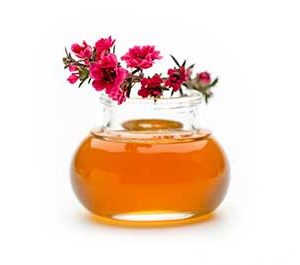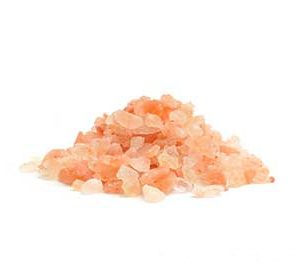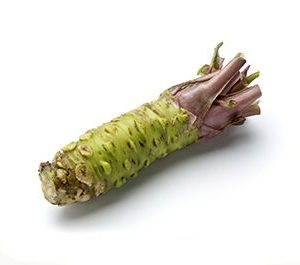If you’ve ever traveled to Japan or eaten at an authentic Japanese restaurant, you’ll notice that their savory, umami-flavored dishes — such as teriyaki — often have a hint of a delicate sweetness.
The first thing that may come to mind is sugar, but you’ll be surprised to know that the flavor probably comes from a type of rice wine — mirin, to be exact.
While drinking wine or using it for cooking is not advisable, it’s important to shed light on this popular condiment, which is an integral part of Asian cuisine. Keep reading to learn about mirin: what it’s used for, how it’s made and why Japanese cooking just isn’t the same without it.
What Is Mirin?
Sauces in Japanese cuisine have a rich, subtle tang that you cannot seem to find in most other dishes, and mirin is most likely responsible for it. Often confused with rice wine vinegar (more about this later), mirin is instead a slightly thick, amber or golden condiment with its own distinct characteristics that set it apart from these two.
Mirin is a type of sweetened wine made by fermenting glutinous rice with rice malt and mixing it with alcohol. Often used in place of sugar due to the light sweetness it imparts, it is usually added to dishes that are cooked and allowed to simmer. It’s also added to teriyaki, as it provides the appetizing glaze and luster this dish is known for.
Making mirin starts by mixing steamed sticky rice that has developed a mold called Aspergillus oryzae (this is known as koji) with distilled spirits, known as shōchū by the Japanese. After letting it ferment for 40 to 60 days, a sweet liquid with 14% alcohol content is produced.
Knowing how to distinguish genuine mirin from fake mirin is very important. Real mirin, called hon mirin, is often more expensive and difficult to find, unless you visit good Japanese supermarkets or sake shops. Beware of mirin-fu chomiryo or aji-mirin, which translates to “tastes like mirin,” and is sold by big brands like Kikkoman. While it does have lower levels of alcohol, it is most likely enhanced with added sweeteners like corn syrup.
Mirin Vs. Rice Vinegar: What’s the Difference?
As mentioned above, mirin is often confused with rice vinegar. However, these are two very different products, although they do come from the same base ingredient, which is fermented rice. According to Kitchn, the difference between the two lies in how they’re produced and used.
Mirin is produced using fermented glutinous rice, wherein the yeast converts the sugar in the rice into alcohol. Rice vinegar — also called rice wine vinegar — is made when the sugars in rice are fermented to first produce alcohol, and then into acid. Rice vinegar is different from typical white vinegar — it’s less acidic and has a mild and somewhat sweet flavor.
Both rice vinegar and mirin can enhance the flavor of your cooking, though it’s crucial that you know how to properly use them and which one is used for which cooking task — they are not interchangeable. Adding too little might not impart any flavor, while too much of either can spell disaster for your meals.
Different Culinary Uses for Mirin
Mirin works as a delicious finish to Japanese soups, such as miso soup, and is a primary component of authentic teriyaki sauce. Mirin works great when used with condiments like tamari and soy sauce, owing to its naturally sweet flavor that contrasts with the others’ saltiness. Food Network lists some of the ways that mirin can be added to foods:
- Mix with soy sauce and wasabi to make a rich dipping sauce that goes well with sushi.
- Add a splash to your chicken and shrimp stir-fry a couple of minutes before taking them off the stove. Use a bit of soy sauce to balance out the sweetness.
- Blend mirin with cinnamon, cumin, tomato paste, garlic, five-spice powder, and salt and pepper, to make a delicious barbecue sauce.
- Drizzle a small amount before serving soup, like chicken soup, for added flavor.
- After pan-frying breaded chicken, deglaze your skillet using soy sauce mirin.
- Combine with apple cider and use as a sweet glaze for baked ham.
How to Make Mirin
Making authentic mirin sauce is a tedious and time-consuming process, mainly because it involves fermentation. Rice, koji and alcohol are mixed together, so that the starch in the rice will be transformed into sugar. The mixture is then strained to eliminate the solid particles. Due to this process, it can take anywhere from 40 days to two months to produce the distinct flavor of this Japanese condiment.
While there are mirin recipes out there that claim to give you the same flavor as the real deal, be aware that these recipes usually involve using a huge amount of sugar to mimic mirin’s distinct sweetness, though it comes at the cost of your health. For example, Food’s substitute Japanese “hon-mirin” recipe calls for 1/4 cup white sugar or corn syrup.
Mirin Substitutes: Alternatives You Can Use in a Pinch
It’s best to look for authentic mirin from Japanese or Asian specialty stores, so you can be sure that you’re getting a high-quality product. Look at the label closely, and make sure that you’re not buying highly processed varieties. However, if you’re in a pinch, or there’s no Asian specialty store near you, there are alternatives you can use.
One mirin substitute would be a small amount of honey mixed with sake, in a 1:5 ratio — this will give a sweet and slightly acidic flavor reminiscent of mirin. Dry sherry or a sweet marsala wine are also good mirin substitutes, according to Bon Appetit.
Mirin Nutrition Facts
Apart from having alcohol (albeit in low levels), mirin has high amounts of sugar, especially processed brands like aji-mirin, which can pack as much as 13 grams of sugar per 2 tablespoons. If consumed in excessive quantities, this can throw your blood sugar levels out of order and put you at risk of insulin and leptin resistance. For this reason, you should use mirin in very limited, moderate amounts.
Mirin Adds a Distinct Flavor, but Use It in Moderation
If you’re preparing a Japanese meal, then mirin is something that you may need. Don’t confuse it with sake or rice vinegar; This sweet cooking wine has its own identity, thanks to the delicate sweetness and glaze it imparts to dishes. It’s important to remember that not all mirin you see in store shelves are the real thing. Stay away from “aji-mirin,” as it offers nothing but a sugar overload.
Aside from its high amounts of sugar, mirin also has low amounts of alcohol. While there’s little risk of overloading on alcohol from mirin, using this condiment too much can have severe repercussions on your health. These are both very valid reasons to use this condiment in moderation.
Frequently Asked Questions (FAQs) About Mirin
- What does mirin taste like?
- Mirin has a naturally delicate sweetness. It also has a mild acidity that can greatly enhance the flavor of any dish.
- Where can you buy mirin?
- You can purchase authentic mirin from Japanese or Asian specialty stores to make sure that you’re getting a high-quality product. Look at the label closely to ensure that you’re not buying highly processed types.
- What is aji-mirin?
- Aji-mirin is a product whose name translates directly to “tastes like mirin.” It’s sold by Kikkoman and other big brands. However, this is far from being authentic mirin, as it is most likely enhanced with corn syrup.







Reviews
There are no reviews yet.